In a small piece, the New York Times looks at the ramifications of the Supreme Court’s decision to uphold the Affordable Care Act. Fewer people are insured and total cost for the programme falls.

In a small piece, the New York Times looks at the ramifications of the Supreme Court’s decision to uphold the Affordable Care Act. Fewer people are insured and total cost for the programme falls.

After an odd two short weeks—imagine two weeks with each only having a Monday and a Friday—we (in the royal sense of I) are back to the routine. So what better way than to look at American awesomeness in blowing things up. Through air strikes launched from US aircraft carriers.
This graphic comes from the New York Times and looks at the changed nature of air warfare in Afghanistan. No longer are US fighters dropping bombs all over the place—during the early days of the war, aircraft would take off laden with so many bombs that they needed to drop some before returning to the carrier—instead they use cannon fire and use it far more sparingly.
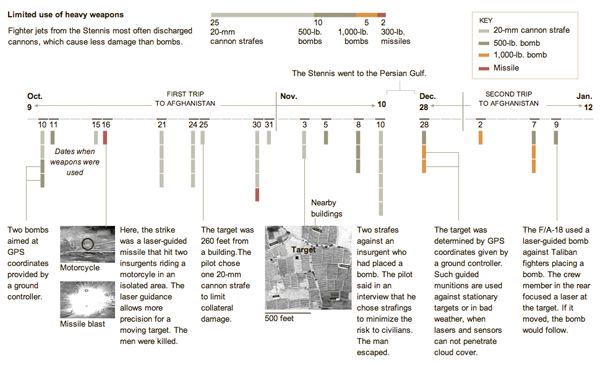
Credit for the piece goes to Sergio Peçanha.
From last week’s New York Times, a look at the Supreme Court by age and political leanings. They’ve gotten a lot more conservative.
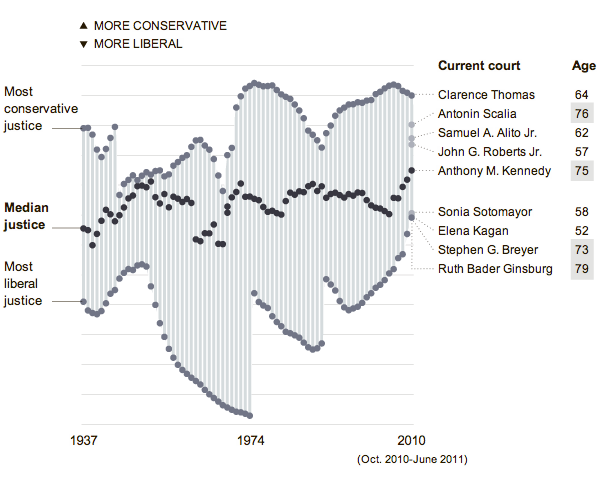
As the Supreme Court is likely to scrap the mandate provision of the health care law—without which sick people are left to pay higher premiums if they can get coverage at all—later today, the New York Times looks at the impact of removing the health care law changes the number of people without health insurance.
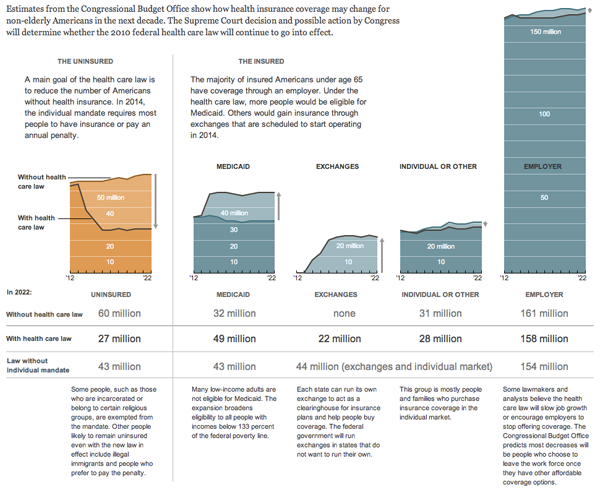
Credit for the piece goes to Lisa Waananen.
From the New York Times we have a graphic that looks at homicides across several different US cities. And in Chicago, they are up significantly from this point last year. So too is Philly, but I like to think of that as an outpouring of brotherly love.
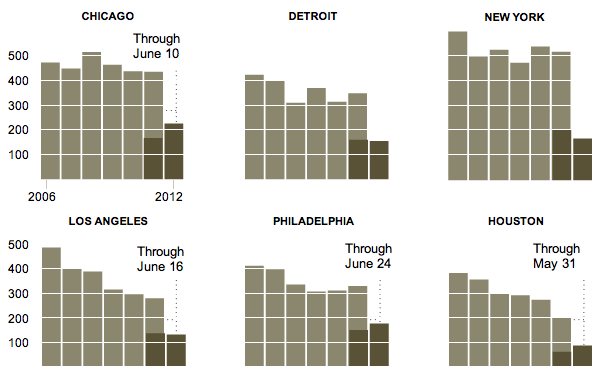
People are nothing more than dirty stinking apes. Especially when it comes to microbes. On Monday the New York Times published an infographic that visualised the data on the prevalence and abundance of different microbes across a sample of over 200 individuals. That is to say the visualisation looks at where microbes are most common and just how common they are in that location.
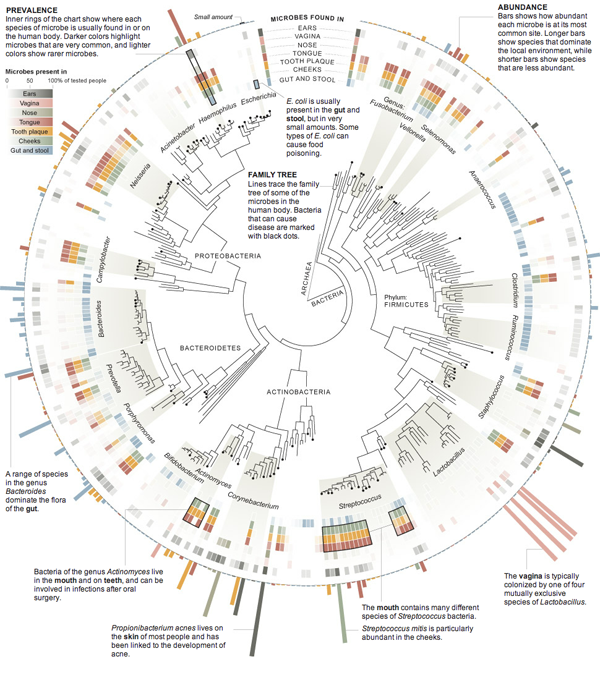
And not in the polite Galactica way, but more in the let’s drill you, rocks, and split you open. I could go in further detail about the injection of fracking fluids, but let’s leave the double entendre alone and talk about Marcellus Shale. It’s a layer of rocks in the dirt that contain natural gas. It’s a pain in the gas production industry (sorry) and thus is only economically viable when fuel prices are high.
So in the 21st century with high fuel prices, energy companies are hydraulically fracturing (fracking) the rock to suck out all the natural gas. But this might be (probably is) causing environmental problems and thus human health problems. Ergo the controversy. This has now reached New York and so the New York Times created a simple map with some key layers of information to explain the controversy there.
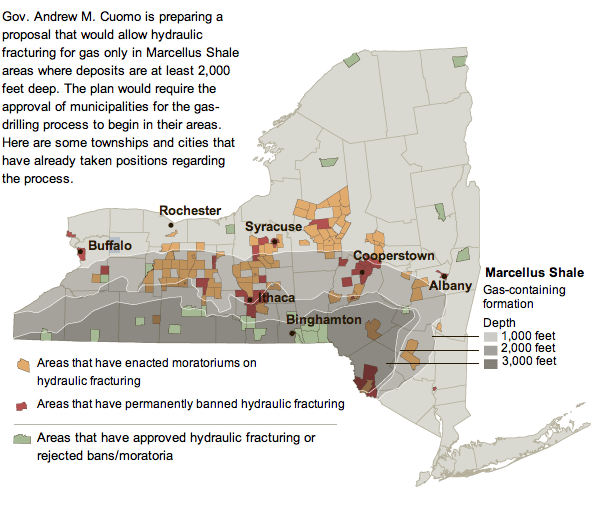
Note the useful layers of depth of the shale and where those intersect (or do not) with areas that have banned or endorsed fracking.
Western Pennsylvania has had similar problems, and the Philadelphia Inquirer has had an interactive special on their website up for a little while now. And by interactive infographic I mean largely just a play-through of static images. Unfortunately, the online content is not of the best resolution and leaves much to be desired. Fortunately the graphics would appear to be quite informative especially as part of a series. A pity they are not entirely legible.

Credit for the Inquirer piece goes to John Tierno.
Infographics and interactive pieces need not always be about data. Sometimes they can help you find things far more practical than levels of Canadian defence spending or changing demographics. Sometimes they can help you find new summer cocktail recipes. Like this piece from the New York Times.

And if you’re me, you can add the experiments to your running tally of drinks as new data points.
Credit for the piece goes to Jacky Myint, Emily Weinstein, Des Shoe, and Tony Cenicola.
It’s like a log cabin. But taller. A lot taller. The New York Times reports with an infographic on a nine-story block of flats (apartment building for us Americans) in London called the Graphite Apartments that was built almost entirely of timber.
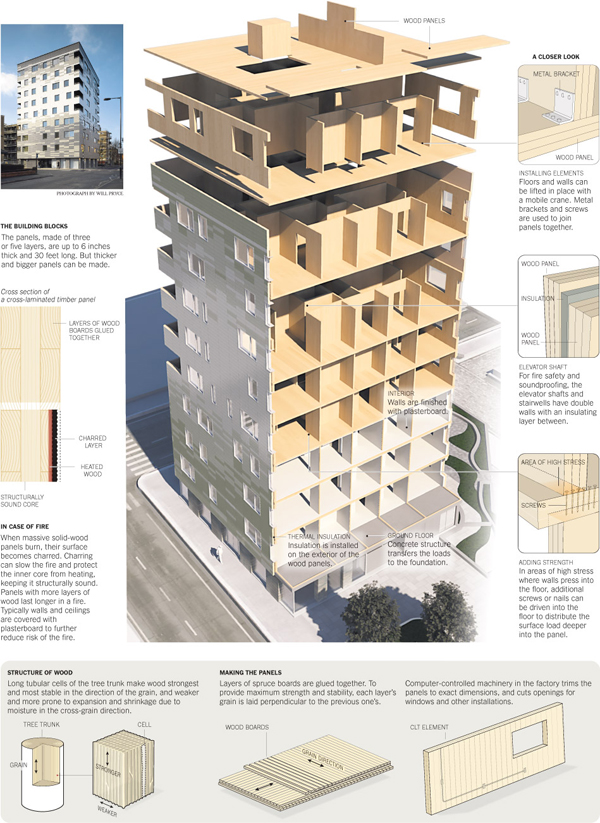
Credit for the piece goes to Mika Gröndahl.
In a rare infographic misstep, the New York Times published an incorrect diagram detailing the centre of the Earth.
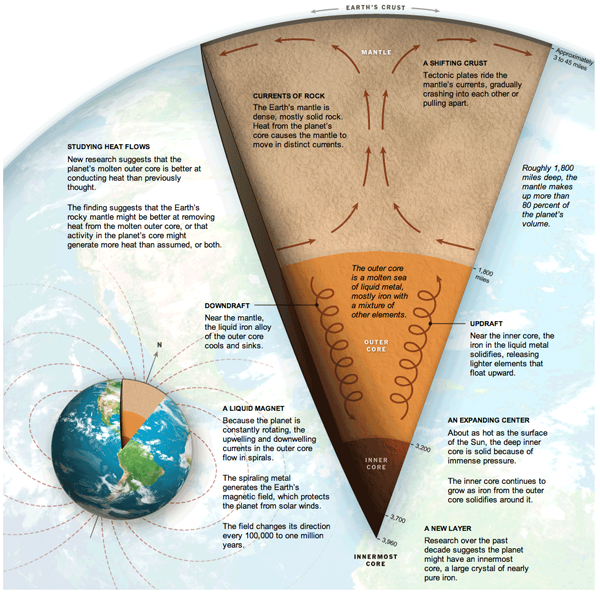
Clearly, anyone who knows anything about science knows that it is not a solid core of iron at the centre of the Earth, but dinosaurs. And I see no dinosaurs in this diagram.
Credit for the piece goes to Jonathan Corum, Ritchie S. King, and Frank O’Connell.